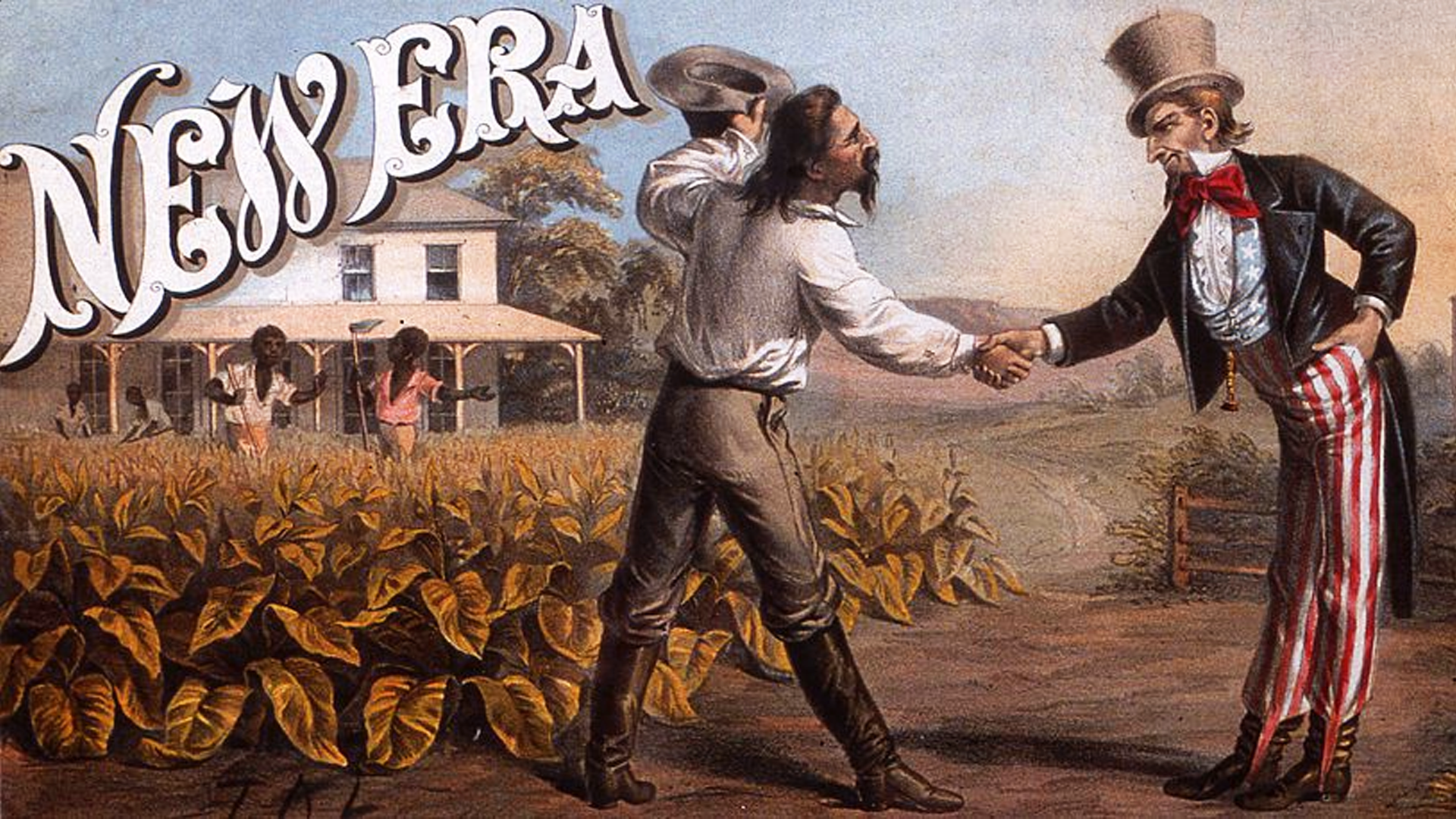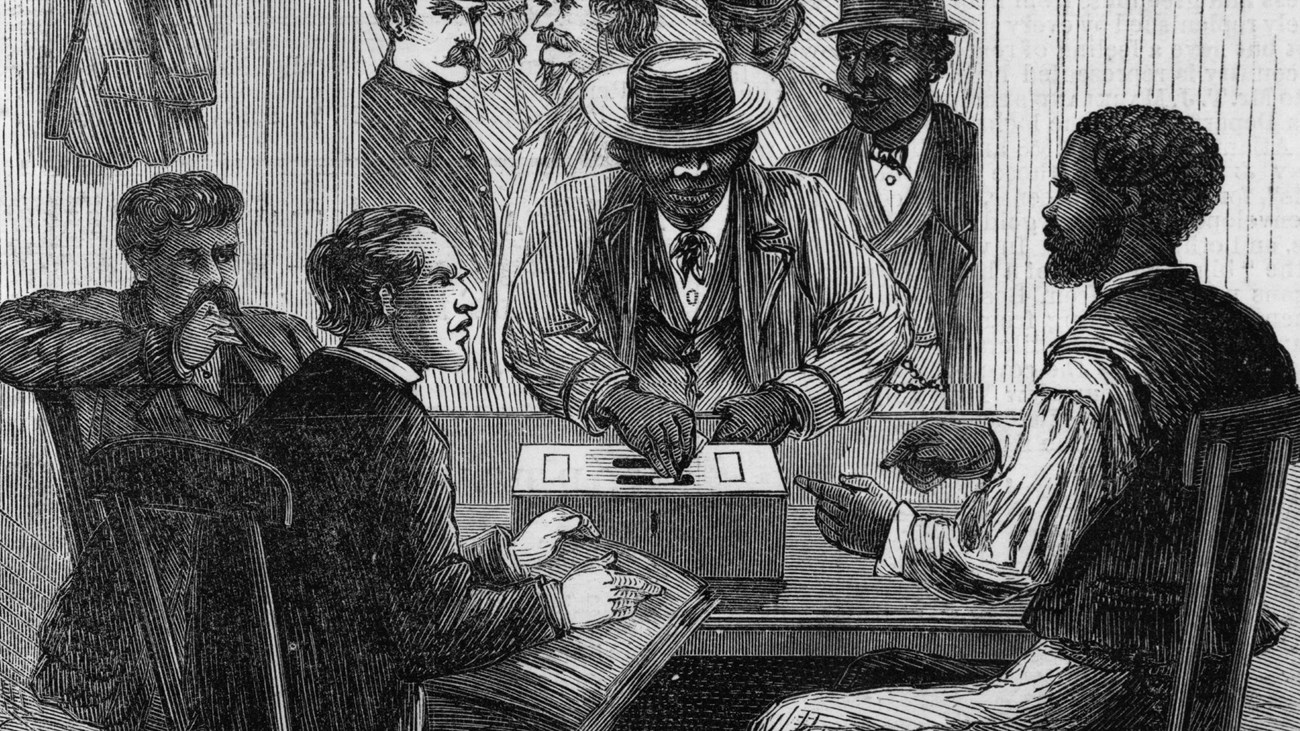Reconstruction: Rebuilding a Nation and Redefining Freedom

The Reconstruction era was America’s attempt to stitch the nation back together after the Civil War while also transforming the meaning of freedom.
The Dive
Reconstruction (1865–1877) was not just about repairing the damage from the Civil War—it was about redefining what freedom, citizenship, and democracy meant in the United States. For the first time, the federal government actively worked to protect the rights of millions of formerly enslaved people.
The Reconstruction Amendments reshaped the Constitution: the 13th abolished slavery, the 14th guaranteed citizenship and equal protection under the law, and the 15th granted voting rights to Black men. Together, these amendments marked some of the most significant legal changes in U.S. history.
The Freedmen’s Bureau played a central role in supporting freedpeople, especially in states like North Carolina. It helped establish schools such as Shaw University, negotiated labor contracts, provided food and shelter, and gave legal assistance to those facing discrimination.
For a brief period, Black political participation surged. African Americans served in local, state, and national government, including in North Carolina’s state legislature. Leaders like Hiram Revels and Blanche K. Bruce in the U.S. Senate were symbols of possibility in a reimagined democracy.
Not everyone welcomed these changes. Southern legislatures passed Black Codes to restrict the rights and economic opportunities of freedpeople. Violent groups like the Ku Klux Klan used terror to intimidate voters and dismantle reforms, while 'Redeemer' politicians sought to restore white supremacist control.
Reconstruction saw fierce political battles between President Andrew Johnson and Radical Republicans in Congress. Johnson’s lenient policies allowed former Confederates to regain power, while Congress pushed for military oversight of the South to enforce civil rights laws.
Although Reconstruction achieved groundbreaking reforms, it ended with the Compromise of 1877, which withdrew federal troops from the South. This left African Americans vulnerable to segregation, disenfranchisement, and systemic racism for generations to come.
Studying Reconstruction helps us see how progress and backlash often go hand in hand—and reminds us that securing rights requires not only passing laws, but also protecting and enforcing them over time.
Why It Matters
Reconstruction was America’s first major attempt at building a multiracial democracy. It showed that sweeping change is possible when law, policy, and activism align—but also that rights can be rolled back if they aren’t protected. Its victories and failures still shape our debates over citizenship, voting rights, and equality today.
?
How did the 13th, 14th, and 15th Amendments change the Constitution?
What role did the Freedmen’s Bureau play in education and economic opportunity?
Why did Reconstruction face such strong opposition, and how was it expressed?
What lessons can we learn from Reconstruction about making rights real and lasting?
In what ways do the challenges of Reconstruction echo in today’s struggles for equality?
Dig Deeper
After the Civil War, Reconstruction aimed to reconcile the country and integrate freedpeople into society—but political conflict and resistance undermined many of its goals.
Related

The Emancipation Proclamation & The 13th Amendment
Freedom on paper is one thing; freedom in practice is another. The Emancipation Proclamation and the 13th Amendment were giant leaps toward liberty—yet the road ahead for formerly enslaved people was long and uneven.

The Tulsa Race Massacre: Black Wall Street Burned
Greenwood was known as Black Wall Street—until a white mob burned it to the ground. The Tulsa Race Massacre wasn’t a riot. It was a coordinated attack. And it was nearly erased from history.

Jim Crow and Plessy v. Ferguson
After Reconstruction, the South built a legal system to enforce racial segregation and strip African Americans of political power. The Supreme Court’s Plessy v. Ferguson decision in 1896 made 'separate but equal' the law of the land—cementing injustice for decades.
Further Reading
Stay curious!
